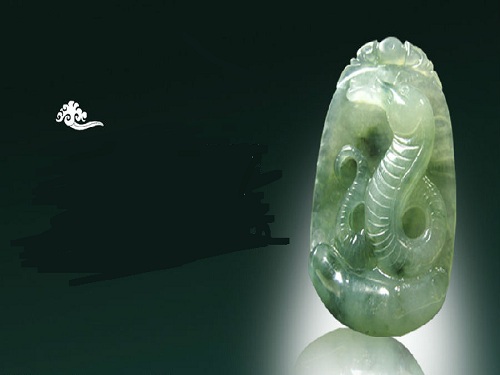Qidan jade modeling is divided into several categories

In the early days of the production of the Jade, the Khitans all imitated the Chinese people's production style. Jintou Jewelry Network explained Qidan jade modeling is divided into several categories.
The first category is the traditional shape of dragons, phoenixes, plates, bowls, etc., all of which are used by the Han people. The Khitans have a strong sense of identity with the Chinese nation. They think they are not “foreigners†and are also descendants of the Chinese people. They are Sacrificial offerings and the like are basically the same as the traditions, but the jade used for sacrificial offerings is very different from the traditional ones. For example, the traditional waist is usually copper gold, and the Khitan unearthed is jade waist, only this one, unearthed in the tomb of the Khitan royal empress. There are also chants used by Buddhists. Unlike the common crickets, which were unearthed in the Khitan, there are some similar things like small tubes in the middle of the pendant. For another example, Ssangyong, Shuangfeng, and Bi-mao are the unique styles of the Khitan. Sitting on a dragon is made by mimicking traditional Chinese objects.
The second category is grassland ecological modeling (fowls and animals, fishing and hunting and the like). These are all related to the life of the nation and are extremely Qidanese. For example, jade “cross-bowâ€, this is a typical Khitan culture, in addition to jade and amber, and even found bronze. Fish-shaped pendants and bear-shaped pendants, fish looks very plump, bears look chubby, but they are relatively rigid and simple, which shows the characteristics of the Liao Dynasty to pursue simplicity.
The third category, Buddhist themes. Buddhism flourished in the Liao Dynasty. As we all know, Buddhism in the Northern Wei period was relatively prosperous. Then it was the Tang Dynasty. From the perspective of unearthed cultural relics, however, Buddhism in the Liao Dynasty was unmatched by other dynasties. In the period of Yelu Abao, the first temple of the Liao Dynasty was established. During the period of the Liao Shengzong and Liao Jingzong, Buddhism became obsolete. According to records at that time, there were more than 10 million people in the Liao Dynasty, of which the monks accounted for 3.6%. Before the Northern Song Dynasty, when the population of the monks reached 0.92%, the state finances had been very difficult to bear, thus illustrating the people's worship of Buddhism in the Liao Dynasty. Each year, the emperor emperor will also give land to the temple of monks, only to invite the monks to eat will spend 300,000 gold. For example, flying in the sky, the Liao Dynasty was the first to be found unearthed, and five sites have been discovered. Another example is what you said earlier.
The fourth category, harness shape. "Khitan saddle vest world." A set of harnesses, decorated with 300 Hetian jade. A large number of agate jade horse harnesses were found in the Huma tomb. Later, on the horse harness of the Central Plains, one or two objects embellished with agate or jade will be found, but this set of grouped jade horse harnesses can only be owned by the Khitan. In the fifth category, Hu Ren styling, namely "foreigner" modeling. This occupies a large proportion in the Qidan jade styling and is a unique style of Qidan. For example, “The Huren Taming the lion pattern amber†is a typical Khitan shape. There are also round sculptures, sculptures, etc. The greatest feature of the jade carvings of the Liao Dynasty is that they appear in pairs. The greatest feature of the Liao Dynasty jade is the symbol of rank and identity.
Yantai Belief Cap Co.,Ltd. , https://www.beliefcap.com
